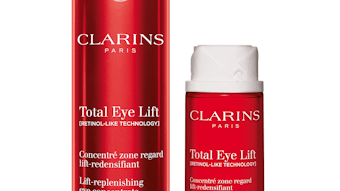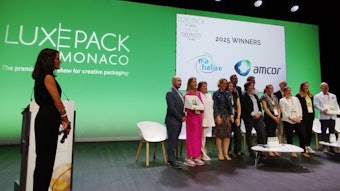Packaging still relies heavily on plastics, glass, metal and paper to make a variety of containers. For example, market statistics from the American Plastics Council indicate that more than 50% of the 115 billion pounds of plastic production in North America was used in packaging consumer and institutional products in 2004. Within these packaging constants, innovation occurs with new materials and technology that reclaims used raw materials.
Nanoplastics
As raw material prices continue to increase, manufacturers are exploring nanotechnology as an avenue to defray costs while maintaining the quality and strength of the packaging. Similarly, as nanotechnology gains a larger market share, its cost effectiveness will increase. Nanotubes, nanoclays and nanocomposites in plastics offer a wealth of improved material performance, according to Intertech-Pira Corporation. The global consumption of nanocomposites has an estimated annual growth rate in excess of 22% through 2010, according to forecasts by BBC Research.
NaturalNano, Inc. is a nanotechnology company focused on extracting, classifying and commercializing naturally occurring nanomaterials. “Our initial technologies are based on naturally formed nanotubes found in halloysite clay,” said Michael Riedlinger, president, NaturalNano, Inc. Nanotubes add strength to polymers and biodegradable plastics and extend the effective use time of cosmetics, explained Riedlinger. Additionally, these tubes can be used to control oxidation within packaging, providing extended shelf life.
During a study at Cornell University, halloysite nanotubes were added to two commercially available polymer resins, appearing to perform as well as the most advanced clay composite materials available currently on the market, according to Cornell’s Emmanuel Giannelis, PhD.
Carbon nanotubes can be used as composite fibers in polymers to improve the mechanical, thermal and electrical properties of the bulk product, as well as increase the elastic modulus by 30%.
Composite materials have demonstrated improved properties in glass, talc and other filled polymeric matrices. Adding nano-enhanced materials to polymers and plastics results in an increase in the nanocomposite material strength and modulus without sacrificing ductility, improved uniformity of finished materials, reduced component weight and improved performance at higher temperatures.
Overall, this technology could reduce the amount of raw petroleum materials needed to create the same packaging products. “There are many potential applications for nanotechnology in packaging,” said Riedlinger. “Our technologies and use of halloysite nanotubes as additives in some polymers have shown promise for improving strength attributes, which may lead to reductions in materials needed for packaging. Additionally, we are researching nanocomposite material applications for future applications.”
These polymers create plastic packaging commonly used in the cosmetic and personal care industry, but nanotechnology looks to crack the divide between traditional packaging and cosmetics, as nanotubes become intrinsic to the product inside the composite packaging as a delivery system for active ingredients.
PLA: Homegrown Packaging
While nanotechnology benefits petroleum-based polymers, packaging with petroleum raw materials bring challenges directly related to volatile pricing in the market. As a result, raw material providers are looking for a renewable material source with stable pricing.
Polylactide (PLA), a biodegradable polymer discovered in the 1890s, has found a route to market in the form of biodegradable packaging. The primary raw material is dextrose, a natural sugar derived from the starch in corn kernels and a renewable resource. PLA is particularly attractive as a sustainable alternative to petrochemical-derived products, since the lactate can be derived from the fermentation of starch-rich agricultural by-products—such as maize, sugar and wheat.
This polymer can be utilized as an alternative to traditional plastic in cartons, while providing clarity, impact and scratch-resistance, heat-stability and stiffness. PLA is currently more expensive than many petroleum-derived commodity plastics, but its price has been falling as more production comes online. The degree to which the price will fall, and the degree to which PLA will be able to compete with non-sustainable petroleum-derived polymers, is still uncertain.
NatureWorks LLC, a wholly owned subsidiary of Cargill Corporation, produces PLA in the U.S. Currently, NatureWorks and AGI/Klearfold are producing PLA folding cartons. According to the company, these products are competitively priced with traditional plastic cartons and source reduced by two caliper points with comparable structural integrity. These cartons can be printed using offset, flexo or silkscreen, and can be embossed or hot or cold foil-stamped for enhanced brand appeal.
“NatureSource cartons are slightly more expensive than APET folding cartons, but the pricing is considered to be much more stable than petroleum-based plastics,” said Patrick McGee, director of marketing, AGI/Klearfold. “Petroleum futures have been very volatile over the last 10 years, as compared to very stable corn futures.”
PLA will completely degrade in an industrial or municipal composting facility. “It clearly has the power to influence consumer choice and to support consumer products companies’ environmental packaging objectives,” stated McGee.
PLA is not currently being used in bottles, according to Vonda Simon, president, SeaCliff Packaging, Inc. “PLA is not strong enough to hold up in bottles,” said Simon. She explained that the oils in cosmetics tend to breakdown PLA, currently limiting its applications. Additionally, PLA breaks down at temperatures above 105ºF, which is too low for use in products that are not transported and stored in temperature controlled environments, according to Laura Setzfand, director of marketing, personal care division, The Hain Celestial Group. (For more information on PLA and its uses, see “Natural Packaging” in the October 2006 issue of GCI.) This technology, however, offers new avenues to explore, while contributing to the trend of natural ingredients and wellness within the cosmetic and beauty industry.
Recycling Alloys
The popularity of recycling has increased as energy prices continue to soar. Anomatic, Inc. uses recycled aluminous alloy to create cosmetic packaging, following the trend for high-recycled, 90% post-consumer recycled content materials. By using aluminum alloys that have already been extracted and refined, manufacturers can see a 95% reduction in electrical energy costs. “Primary aluminum extraction plants are traditionally located where there is cheap electrical energy,” explained Mark Ormiston, director of research and development, Anomatic, Inc.
Aluminum alloys exhibit strong resistance to corrosion because of an oxide skin that forms due to reactions with the atmosphere. This corrosive skin protects aluminum from most chemicals, weathering conditions and even many acids. Anomatic utilizes “green finish” anodizing, which contributes to the metallic finish and helps the dye to tie to the aluminum without using heavy metals.
Aluminum is a very versatile metal. It can be extruded into a variety of shapes, turned, milled and bored in the machining process. For most applications, aluminum needs no protective coating, but it often is anodized to improve color and strength.
Working with aluminum manufacturers, Anomatic formulated a standard alloy with a high-recycled content for Estée Lauder’s Origins line. The alloy is deep-drawn to form metal pieces, with anodizing forming a thin oxide coating to improve performance and infuse dyes.
“Anodizing doesn’t have heavy metals or organic solvents utilized in the process, so it’s a really good fit to make a statement in environmental improvements,” said Ormiston. Various efforts to produce materials utilizing recycled content—whether paper, plastic or metal—are big initiatives because of increased awareness of the cause and effect within the environment, according to Ormiston.
Not only is recycling aluminum alloy sound environmentally, it also contributes cost savings for the manufacturer. Newer alloy requires more energy to produce, but refined recycled alloy takes less energy because additional processing is not required. However, recycled content does require technical planning to achieve the best outcome.
“In working with newer, high-recycled materials, Anomatic originally encountered a few technical challenges to overcome, but nothing significant. We’ve since learned the importance of remaining mindful of where the recycled alloy originates, because depending on the source, the process of using high-recycled materials can in fact have an unintended negative effect on the outcome,” said Orminston.
For packagers, cost and durability stand out as critical to raw material choices. Packaging must stand up to the wear and tear of shipping while protecting and contributing to the overall marketing of a product and its brand. When using recycled and non-petroleum based materials, these needs can be met while providing innovative packaging.









